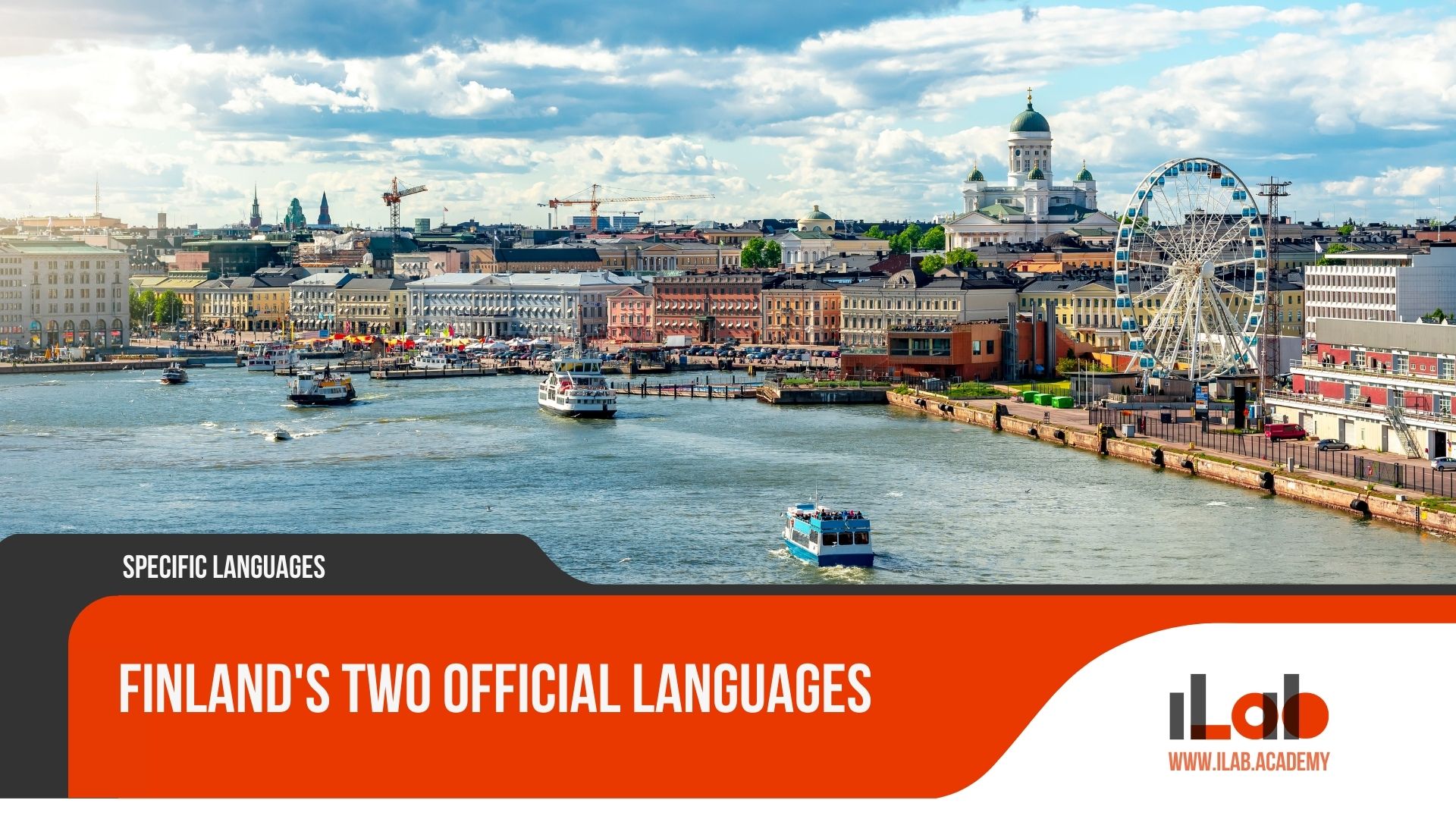Table of contents
In the northern reaches of Europe, Finland presents a compelling case study in the mechanics of bilingual governance and cultural identity. As one navigates through the societal fabric of this Nordic nation, the coexistence of Finnish and Swedish, its two official languages, offers a unique window into the complex interplay between language and nationality. This article aims to dissect the layers of Finland’s linguistic landscape, commencing with an exploration of the historical trajectory that has led to the country’s current linguistic framework. By examining the delicate balance achieved through legislative measures and educational strategies, we uncover the foundations that have allowed for the harmonious integration of both Finnish and Swedish into the daily lives of Finnish citizens. However, as we venture deeper into this topic, it becomes apparent that the waters of bilingualism are not without their undercurrents. The nuances of cultural expression, the subtleties of political debate, and the challenges posed by an ever-evolving global context invite contemplation of the robustness of Finland’s bilingual model and its capacity to adapt to the demands of the future.
Key Takeaways
- Finland has a unique bilingual landscape with two official languages, Finnish and Swedish, which coexist within the national framework.
- The historical path to bilingualism in Finland includes periods of Swedish rule and the subsequent establishment of Finnish alongside Swedish as an official language.
- Finland’s language laws guarantee rights for speakers of both Finnish and Swedish, particularly in the context of education, public services, and media.
- Bilingualism in Finland contributes to the country’s cultural richness, with Finnish and Swedish playing important roles in literature, media, arts, and festivals.
Unraveling Finland’s Linguistic Tapestry
Finland’s linguistic landscape is characterized by a harmonious coexistence of two official languages, Finnish and Swedish, each with its own unique geographic and demographic footprint. Finnish is the predominant language, spoken by approximately 88% of the population, while Swedish is spoken by about 5.2%. This bilingual status is not merely a legal formality but a reflection of the country’s commitment to cultural diversity and mutual respect among its citizens.
The geographic distribution of the two languages is notably distinct. Finnish speakers are spread throughout the country, whereas Swedish-speaking communities are predominantly found in the coastal areas of the west and south, including the autonomous region of the Åland Islands, where Swedish is the sole official language. The capital city, Helsinki, also boasts a significant number of Swedish speakers.
Finnish and Swedish speakers in Finland enjoy equal rights and services in their respective languages, a policy that is meticulously implemented across public sectors such as education, judicial affairs, and health care. This linguistic duality is embedded in the Finnish Constitution and further reinforced by specific language laws designed to preserve and promote the use of both languages.
Understanding Finland’s bilingual framework is crucial for comprehending how the nation has woven together a cohesive national identity while nurturing the linguistic heritage of its people. The country’s dedication to bilingualism serves as a testament to its inclusive approach to governance and societal development. As Finland continues to navigate the intricacies of its linguistic tapestry, it stands as a model for countries around the world grappling with the complexities of linguistic diversity and minority rights.
The Historical Path to Bilingualism in Finland
Understanding the current linguistic landscape of Finland necessitates a look back at the significant historical events that have led to the establishment of Finnish and Swedish as official languages. Finland’s path to bilingualism is deeply rooted in its history, marked by centuries of Swedish rule, which began in the late 12th century and lasted until 1809. During this period, Swedish served as the language of administration, law, and education, firmly establishing its presence in Finnish society.
In 1809, Finland was ceded to the Russian Empire, becoming an autonomous Grand Duchy. This period initiated a rise in Finnish national consciousness and a cultural movement known as the “Fennoman” movement emerged, advocating for the Finnish language and culture. The movement gained momentum, and by the latter half of the 19th century, efforts to elevate the status of Finnish were successful. The Language Ordinance of 1863 issued by Tsar Alexander II allowed Finnish to be used alongside Swedish in government affairs.
The move towards linguistic equality continued, and in 1892 Finnish was granted equal legal status with Swedish. The dawning of Finnish independence in 1917 further solidified the role of both languages in the new nation’s identity. The Finnish Constitution of 1919 enshrined the equal status of Finnish and Swedish, cementing the country’s commitment to bilingualism.
Today, this historical path is reflected in Finland’s language laws and education system, which uphold the rights of speakers of both languages. The historical journey from Swedish dominance to a balanced bilingual coexistence is pivotal to understanding the Finnish societal framework, wherein the two languages continue to shape the nation’s cultural and political identity.
Finnish and Swedish: Language Laws and Education
The legislative framework in Finland ensures that both Finnish and Swedish speakers are afforded equal opportunities in education, access to public services, and media representation, reflecting the country’s commitment to bilingualism. This commitment is enshrined in laws that not only recognize the right to use either Finnish or Swedish in dealings with government agencies but also mandate the provision of education in both languages. Such legislation upholds the principle that language should not be a barrier to participation in society, nor to the accessing of services and information.
In the educational domain, the Language Act and the Basic Education Act together guarantee the right to receive instruction in one’s mother tongue, be it Finnish or Swedish. This has led to the establishment of a dual education system wherein schools offer curricula in both languages, often within the same municipality. The language of instruction is chosen by the parents, ensuring that children can be educated in their native language from pre-school through higher education.
The practical application of these laws extends beyond the classroom. Public service broadcasters, for example, are required by law to produce content in both Finnish and Swedish, thereby ensuring linguistic representation in the media. This not only promotes language skills among the general population but also reinforces cultural identity and understanding.
Cultural Expression through Finland’s Official Languages
Bilingualism in Finland serves as a catalyst for a diverse range of cultural expressions, enriching the nation’s literature, media, arts, and festivals with the unique perspectives and traditions of its Finnish and Swedish speakers. The interweaving of two languages within the cultural fabric of Finland fosters a dynamic and multifaceted cultural identity that resonates throughout the country.
In literature, Finnish and Swedish authors contribute to a shared literary heritage while honing distinct voices that reflect their linguistic communities. The dual language landscape allows for a rich dialogue between Finnish and Swedish narratives, often exploring themes of identity, history, and the natural environment intrinsic to Finland’s ethos.
The media sector in Finland also exemplifies the country’s commitment to bilingualism. Television and radio broadcasts are available in both Finnish and Swedish, ensuring that cultural programming, news, and entertainment reach all citizens. This bilingual media presence not only informs but also connects Finnish and Swedish speakers, promoting a sense of unity and mutual understanding.
Arts in Finland draw from the deep well of Finnish and Swedish influences, creating a vibrant and inclusive scene. From theater and music to visual arts, bilingualism encourages artistic collaborations that transcend language barriers, enriching the national culture.
Festivals in Finland offer a celebratory platform where bilingualism is on full display. Events such as the Helsinki Book Fair and the Turku Music Festival showcase the diversity of Finnish and Swedish cultural contributions, allowing attendees to immerse themselves in a unique blend of traditions and contemporary expressions.
Through these cultural domains, Finland’s official languages not only coexist but thrive, jointly shaping a national identity that honors the past while embracing an inclusive future.
The Swedish-Speaking Finns: A Cultural Community
Sweden’s linguistic legacy lives on in Finland through its vibrant Swedish-speaking community, which boasts a rich cultural identity and traditions that significantly contribute to the nation’s cultural mosaic. This community, while representing a minority of the population, plays a pivotal role in preserving the Swedish language and culture within the Finnish context.
- Cultural Identity and Traditions
- Midsummer celebrations: Marked by maypole dancing, bonfires, and traditional songs, reflecting a shared cultural heritage with Sweden.
- Culinary customs: Distinct dishes like “svensk fisksoppa” (Swedish fish soup) that distinguish their cuisine from Finnish culinary traditions.
- Literature and Arts: Swedish-speaking authors and artists add to the diversity of Finland’s cultural scene, with works often exploring themes of identity and belonging.
The Swedish-speaking Finns, often referred to as Finland-Swedes, have their main areas of settlement along the coastlines of the Gulf of Bothnia and the Archipelago Sea. They have maintained a sense of community through institutions such as Swedish-speaking schools and cultural associations, which serve as hubs for their cultural expressions and identity preservation.
Integration within broader Finnish society has been facilitated by Finland’s bilingual policies. The Swedish-speaking Finns have access to public services in their mother tongue, and they contribute to a bilingual national dialogue. Their presence is a testament to Finland’s commitment to linguistic diversity and cultural pluralism, offering an enriching dimension to the Finnish way of life.
In understanding the Swedish-speaking Finns, one gains insight into the complex tapestry of Finland’s heritage. This community embodies a unique synthesis of historical influences and contemporary Finnish culture, emphasizing the country’s dynamic and inclusive national identity.
Language Debates and Politics in Finland
While the Swedish-speaking community continues to thrive within Finland’s cultural mosaic, ongoing debates about language requirements in public offices and educational institutions reflect the complexities of the country’s bilingualism in the political arena. Language policy in Finland is not just a matter of administrative protocol but also a topic of heated discussions among politicians, civil servants, and the general public. These debates often center on the practicality and fairness of maintaining Swedish as a compulsory subject in schools and as a requirement for certain public sector jobs.
The core of the debate can be distilled into three main areas: education, public services, and national identity. Here is a concise overview presented in table format to illustrate these aspects:
| Area of Debate | Finnish Majority View | Swedish-speaking Community View |
|---|---|---|
| Education | Mixed opinions on mandatory Swedish; some call for more language choices. | Emphasizes the importance of maintaining Swedish in the curriculum for cultural preservation. |
| Public Services | Questions the necessity of Swedish for service delivery in predominantly Finnish areas. | Stresses equal access to services in both official languages as a legal right. |
| National Identity | Varied perspectives on what constitutes Finnish identity; for some, bilingualism is integral. | Strongly associates bilingualism with historic and cultural identity. |
The discourse is further complicated by the fact that language proficiency requirements in public office can affect employment prospects and political representation. Amidst these discussions, policymakers face the challenge of balancing historical bilingual commitments with the evolving linguistic dynamics of contemporary Finnish society. The outcome of these debates will play a significant role in shaping the future linguistic landscape of Finland, reflecting the nation’s dedication to upholding its rich, diverse heritage while navigating the practical needs of its citizens.
The Impact of Bilingualism on Integration and Multiculturalism
In the context of Finland’s diverse society, the dual official language policy plays a crucial role in the integration of immigrants and the shaping of a multicultural identity. The facility to communicate in either Finnish or Swedish is not just a legal right but a social bridge connecting various ethnic groups within the Finnish tapestry. This bilingual framework fosters a more inclusive environment, where linguistic diversity is seen as an asset rather than a barrier.
Integration through Language Learning:
- Educational Opportunities: Immigrants are encouraged to learn both Finnish and Swedish, which enhances their employability and social participation.
- Language Courses and Support: Free language courses are available, underscoring the government’s commitment to assisting newcomers in navigating the linguistic landscape.
- Cultural Competence: Fluency in the official languages promotes understanding of Finnish customs and societal norms, easing cultural assimilation.
Multicultural Identity Formation:
- Bilingual Public Services: The availability of services in Finnish and Swedish ensures equitable access for all, regardless of linguistic background.
- Media Representation: Multilingual media outlets reflect and celebrate the country’s cultural plurality, strengthening collective identity.
- Policy Adaptation: Language policies are continuously adapted to accommodate the growing multicultural populace, demonstrating dynamic governance.
Challenges and Responses:
- Resource Allocation: Balancing the resources for language education and integration poses ongoing challenges.
- Community Engagement: Active engagement with language minority communities helps to tailor integration policies effectively.
- Ongoing Research: Continuous research in bilingualism and integration informs policy development, ensuring that practices evolve with demographic shifts.
Understanding the intrinsic link between language and culture, Finland’s approach to bilingualism provides a framework for immigrants to not only integrate into society but also contribute to its multicultural evolution.
Challenges and Opportunities of Bilingualism
As Finland navigates the complexities of integrating a multicultural population, the country also faces the intricate balance of upholding a bilingual system that presents both challenges and opportunities for economic and social dynamics. The coexistence of Finnish and Swedish as official languages is a testament to the country’s commitment to cultural diversity and historical acknowledgment. However, this bilingual policy necessitates substantial investment in education and public services to ensure that citizens are proficient in both languages, which can be resource-intensive.
On one hand, the requirement for fluency in both languages in certain public sector jobs can be seen as a barrier to entry for some individuals, potentially limiting job opportunities. On the other hand, bilingualism offers significant benefits, such as cognitive advantages, broader communication skills, and a wider cultural perspective. For businesses, bilingual capabilities can open up new markets and foster better regional integration with other Nordic countries.
In personal and professional contexts, being bilingual in Finland can lead to a more nuanced understanding of cultural nuances and improve social cohesion. It can also present opportunities for individuals to participate in a richer array of cultural experiences and contribute to both Finnish and Swedish-speaking communities.
The economic implications of bilingualism are multifaceted. While there is a cost associated with maintaining services and education in two languages, there is also potential for economic growth through increased trade and cooperation with Swedish-speaking regions and countries.
Preserving Linguistic Heritage: Future Outlook for Finland’s Official Languages
Looking towards the future, Finland faces the challenge of preserving its linguistic heritage amid shifting demographics and the pervasive impact of globalisation. As the country evolves, it must navigate the complexities of maintaining a bilingual society that honors both the Finnish and Swedish languages. This endeavor is not only about language preservation but also about fostering a society that values its cultural plurality.
To ensure the vitality of Finland’s official languages, several strategic approaches are being considered:
Policy and Legislation
- Reinforcement of Language Laws: Strengthening existing policies to ensure that language rights are upheld in education, public services, and media.
- Language Education: Continued support for comprehensive bilingual education and language immersion programs to foster proficiency in both Finnish and Swedish.
Cultural Promotion
- Cultural Events and Media: Encouraging the proliferation of cultural expressions in both languages through festivals, literature, arts, and bilingual media.
- Community Engagement: Supporting community initiatives that promote the use of Finnish and Swedish in social contexts and everyday communication.
Demographic Dynamics
- Migration and Multiculturalism: Adapting language policies to embrace a growing multicultural population while ensuring the integration of new residents into the bilingual framework.
- Youth Involvement: Engaging younger generations in the active use and appreciation of both languages to secure their continued relevance.
As Finland looks ahead, the commitment to its linguistic heritage is clear. By embracing these strategies, the nation seeks to sustain and enrich its bilingual character for future generations, ensuring that Finnish and Swedish continue to thrive side by side in a changing world.
Frequently Asked Questions
How Does the Bilingual Status of Finland Affect Tourists and International Business Interactions Within the Country?
Finland’s bilingual status, featuring Finnish and Swedish, enhances its appeal to tourists and facilitates international business. Visitors experience a diverse cultural landscape, often finding communication eased by multilingual signage and services. For businesses, the linguistic versatility can simplify negotiations and foster inclusive market engagement. This environment reflects Finland’s commitment to linguistic accessibility and cultural richness, making it an accommodating destination for tourism and international commerce.
What Are Some Common Misconceptions About the Language Abilities of Finnish and Swedish Speakers in Finland?
Common misconceptions about Finnish and Swedish speakers in Finland include the belief that all Finns are fluently bilingual, or conversely, that Swedish speakers are not proficient in Finnish. In reality, language proficiency varies, with some individuals being bilingual and others favoring one language. Additionally, it is often mistakenly assumed that Swedish has limited use, whereas it remains a key part of Finland’s culture, education, and government services.
How Has the Digital Age and the Prevalence of English Impacted the Use of Finnish and Swedish Among the Younger Generation in Finland?
The digital age and the ubiquity of English have influenced language dynamics among Finland’s youth. While English proficiency is common, it has not displaced Finnish and Swedish use. Instead, it often serves as a supplementary language, particularly in online communication and media consumption. However, there is a vigilant effort to maintain the native languages’ relevance, ensuring that they continue to be used in education, digital platforms, and daily life.
Are There Any Notable Differences in the Regional Accents or Dialects of Finnish and Swedish Within Finland That Affect Mutual Intelligibility?
In Finland, both Finnish and Swedish exhibit regional variations that can influence mutual intelligibility. Accents and dialects differ notably across regions, reflecting historical, geographical, and social factors. These variations sometimes pose challenges for speakers from different areas in understanding each other fully. However, standardized education and media exposure generally ensure that all speakers can communicate effectively despite these regional linguistic differences.
How Do Finnish and Swedish Speakers in Finland View the Importance of Learning Additional Foreign Languages, Given Their Bilingual Background?
Finnish and Swedish speakers in Finland generally value multilingualism, recognizing additional foreign languages as assets in a globalized world. Despite their bilingual background, there is an appreciation for learning languages like English, which serves as a lingua franca, facilitating international communication and enhancing educational and professional prospects. This perspective underlines the importance of language skills in an interconnected society, beyond their own national linguistic framework.
Conclusion
In conclusion, Finland’s commitment to bilingualism has fostered a distinctive equilibrium between Finnish and Swedish, enriching its cultural landscape and fortifying societal cohesion. Legislative frameworks and educational strategies have been pivotal in upholding language rights, ensuring equal opportunities for cultural expression. While demographic changes and global trends present ongoing challenges, the nation’s dedication to nurturing its linguistic assets remains central to its identity, promising a resilient future for its dual-language heritage.














